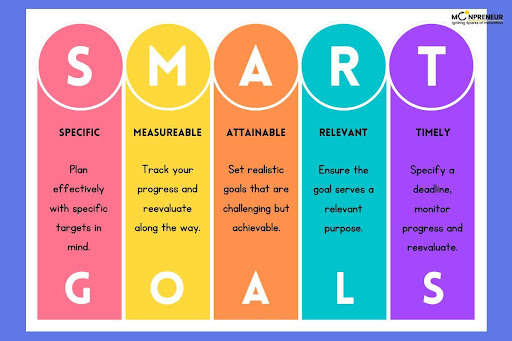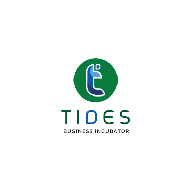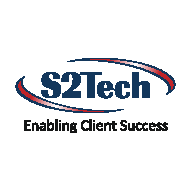Educational success is often built on clear, realistic, and well-defined aims – and this is where SMART learning objectives come in. Originally designed as a business management tool, the SMART methodology has since been adopted across education, training, and personal development. SMART goals provide a structured way for both students and educators to set focused, achievable, and motivating targets that support lifelong learning and growth.
What Are SMART Learning Objectives?

SMART is an acronym that describes five essential characteristics of effective educational goals:
- Specific – Clear and well-defined learning targets.
- Measurable – Progress can be tracked and outcomes assessed.
- Achievable – Ambitious but realistic objectives.
- Relevant – Goals aligned with broader educational or personal needs.
- Time-bound – A set timeframe to achieve the goal.
This framework was first proposed by George T. Doran in Management Review (1981). At that time, “A” stood for Assignable and “R” for Realistic. Today, in the educational context, SMART goals emphasize Achievability and Relevance, making them highly adaptable to modern classrooms, eLearning platforms, and professional training.
Why Are SMART Goals Important for Students?
SMART educational goals offer clarity and direction that students often need to stay motivated. Unlike vague intentions such as “I want to do better in school,” SMART goals turn aspirations into actionable steps. For example:
“I will raise my math grade from 65% to 80% within three months by practicing 30 minutes daily and completing weekly quizzes.”
This structure is powerful because it:
- Encourages accountability and responsibility.
- Provides trackable milestones.
- Prevents frustration by keeping goals realistic.
- Builds confidence and motivation as progress is visible.
Recommended Reading: AI as Your Second Brain: Revolutionizing Decision-Making in the Digital Age
Step-by-Step Guide to Writing SMART Learning Objectives
1. Specific
Vague goals confuse students. Instead of “Get better at science,” a specific goal is “Complete one science experiment per week and record observations.” This clarity helps learners stay focused.
2. Measurable
Progress should be trackable. For example: “Score at least 80% in three consecutive practice quizzes.” Gamified quizzes, progress charts, or assessment rubrics make measurement more engaging.
3. Achievable
Goals must be realistic. Breaking down a course into smaller lessons, offering beginner-to-advanced modules, or rewarding completion with badges motivates learners without overwhelming them.
4. Relevant
Students engage more when goals align with their lives. For instance, practicing presentation skills is highly relevant for debates or future workplace communication. Relevance makes learning meaningful.
5. Time-Bound
Every goal needs a deadline. For example: “Finish a 20-hour coding course in six weeks.” Deadlines prevent procrastination and encourage consistent progress.
Recommended Reading: The Good, the Bad & the Unknown of AI
Examples of SMART Educational Goals
Here are examples across different contexts:
- Classroom: “This semester, students will write three essays, each scoring 70% or higher.”
- Online Course: “By the end of this photography course, learners will produce a portfolio of ten edited photos using advanced lighting techniques.”
- Professional Development: “Within six months, employees will complete a project management course and reduce project overruns by 20%.”
- Student Motivation: “I will learn 5 new English words daily for 30 days and use them in sentences.”
Benefits of Using SMART Learning Objectives
- Enhanced Focus and Clarity – Students understand exactly what is expected.
- Improved Measurement – Progress can be evaluated with clear benchmarks.
- Increased Motivation – Deadlines and achievable milestones push learners to persist.
- Personal Growth – Goal-setting builds confidence, discipline, and responsibility.
- Better Course Design – For educators, SMART goals ensure lesson plans are structured and outcome-driven.
Common Mistakes to Avoid
- Setting vague or overly broad goals (“learn math” instead of “solve 10 algebra problems daily”).
- Creating objectives with no measurable outcomes.
- Including irrelevant content that doesn’t align with learner needs.
- Setting unrealistic or unattainable targets that lead to frustration.
Strategies for Implementing and Monitoring SMART Goals
- Integrate into Lesson Planning – Keep objectives front and center in course design.
- Track Progress Frequently – Use quizzes, assignments, or self-checks.
- Provide Feedback – Celebrate small wins and guide improvements.
- Encourage Reflection – Ask students to evaluate how close they are to their goals.
- Personalize Learning – Tailor goals to students’ abilities, interests, and professional aspirations.
Long-Term Impact of SMART Goals in Education
When learners practice SMART goal setting, they gain skills that extend beyond school:
- Career readiness through structured thinking and discipline.
- Lifelong learning habits that keep curiosity alive.
- Self-confidence from achieving measurable milestones.
- Adaptability by breaking complex tasks into manageable steps.
Final Thoughts
SMART educational goals are more than just academic targets—they’re tools for student motivation, accountability, and success. By setting Specific, Measurable, Achievable, Relevant, and Time-bound goals, students stay focused, track progress, and celebrate victories. For educators, SMART objectives improve course design and learner engagement. With structured guidance from teachers and parents, SMART goals lay the foundation for lifelong success.
Moonpreneur is on a mission to disrupt traditional education and future-proof the next generation with holistic learning solutions. Its Innovator Program is building tomorrow’s workforce by training students in AI/ML, Robotics, Coding, IoT, and Apps, enabling entrepreneurship through experiential learning.

























